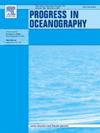What makes a marine heatwave forecast useable, useful and used?
IF 3.6
3区 地球科学
Q1 OCEANOGRAPHY
引用次数: 0
Abstract
There is growing concern among decision makers in a warming world that increasing frequency and severity of extreme events, such as marine heatwaves, is making historical information less representative and useful. To aid decision making in a rapidly warming ocean, researchers have developed new forecast tools that can predict marine heatwaves on sub-seasonal to seasonal timescales. As demand from marine stakeholders increases for actionable information, effective transfer is paramount for uptake and response. Here we consider three aspects critical to aid this information transfer. The model system must be useful – having the appropriate model type, resolution, and domain, with model skill verified against observations. The forecasts must be useable with skill on timescales relevant to decision making, interpretable by end users, and delivered in a practical format. The forecast information must be used, which requires clear communication at appropriate levels, strong user engagement, and consideration of industry agility and incentives. Feedback between these three aspects is needed to ensure continuous improvement in the level of forecast usefulness, useability, and uptake. Forecasts are a critical tool in the management of climate risk and the framework we present here will be important for maintaining profitable and sustainable marine industries into the future.
是什么使海洋热浪预报可用、有用和被使用?
在全球变暖的情况下,决策者越来越担心,极端事件(如海洋热浪)的频率和严重程度日益增加,正在使历史信息的代表性和实用性下降。为了帮助在快速变暖的海洋中做出决策,研究人员开发了新的预测工具,可以在亚季节到季节的时间尺度上预测海洋热浪。随着海洋利益相关者对可操作信息的需求增加,有效的转移对于吸收和响应至关重要。在这里,我们考虑三个方面对帮助这种信息传递至关重要。模型系统必须是有用的——具有适当的模型类型、分辨率和领域,并根据观察验证模型技能。预测必须在与决策相关的时间尺度上熟练地使用,最终用户可以解释,并以实用的格式交付。必须使用预测信息,这需要在适当的级别上进行清晰的沟通,强烈的用户参与,并考虑行业敏捷性和激励。这三个方面之间需要反馈,以确保预测有用性、可用性和吸收水平的持续改进。预测是管理气候风险的关键工具,我们在这里提出的框架对于保持未来海洋产业的盈利和可持续发展至关重要。
本文章由计算机程序翻译,如有差异,请以英文原文为准。
求助全文
约1分钟内获得全文
求助全文
来源期刊

Progress in Oceanography
地学-海洋学
CiteScore
7.20
自引率
4.90%
发文量
138
审稿时长
3 months
期刊介绍:
Progress in Oceanography publishes the longer, more comprehensive papers that most oceanographers feel are necessary, on occasion, to do justice to their work. Contributions are generally either a review of an aspect of oceanography or a treatise on an expanding oceanographic subject. The articles cover the entire spectrum of disciplines within the science of oceanography. Occasionally volumes are devoted to collections of papers and conference proceedings of exceptional interest. Essential reading for all oceanographers.
 求助内容:
求助内容: 应助结果提醒方式:
应助结果提醒方式:


